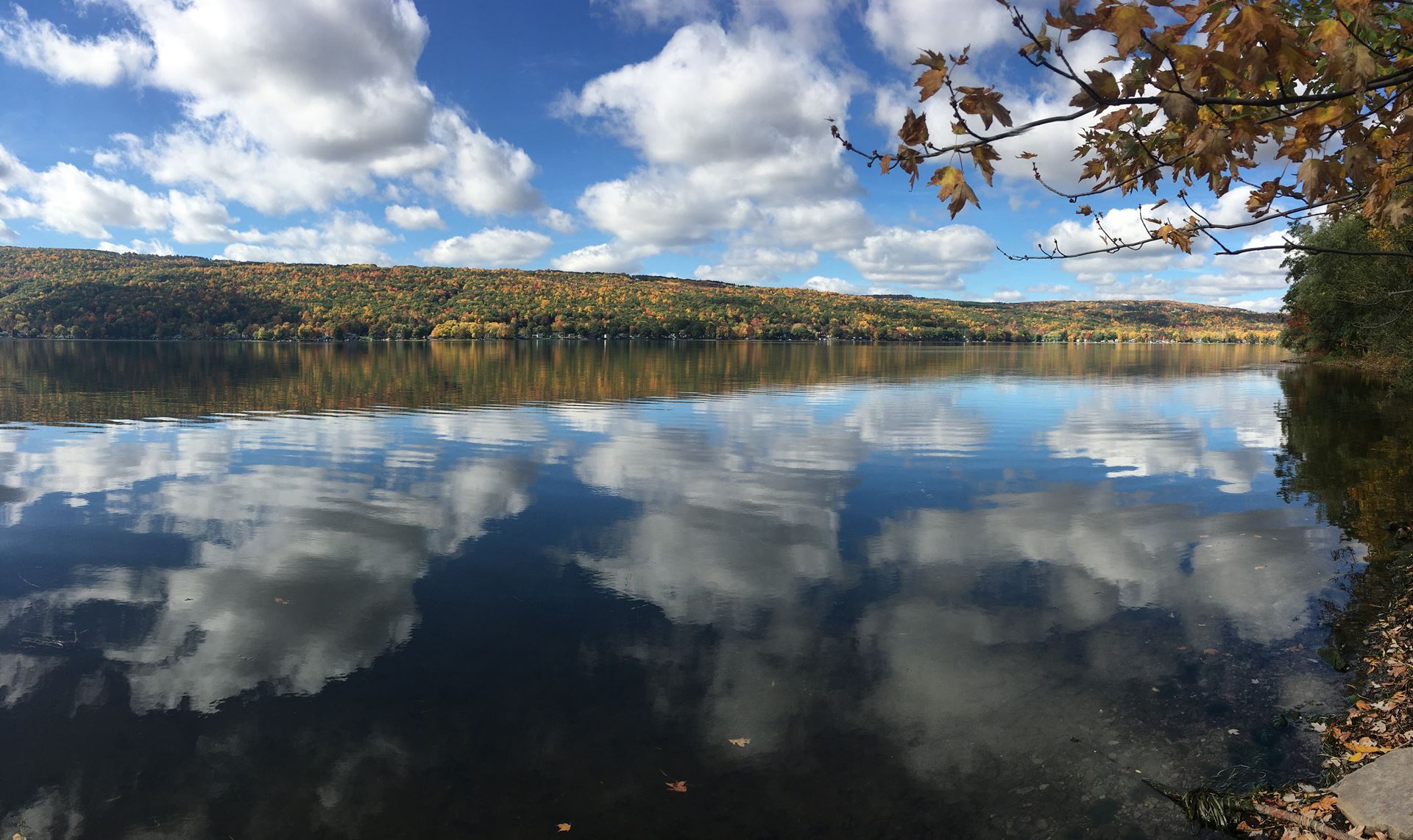-
-
-
-
-
-
-
-
-
FAQ's
-
-
-
-
 Welcome to the Honeoye Valley Association |
FAQ's about Alum
What is alum and why would we apply it to Honeoye Lake? - Alum is aluminum sulfate. You can find it at on your grocer’s shelf in the spices. It is commonly used in making pickles. When applied to our lake, the alum will form an aluminum hydroxide floc that will slowly settle to the bottom of the lake over a 24-48 hour period. Once on the bottom, the floc will become integrated into the sediments absorbing phosphorus as it is released from our rich bottom sediments. This will help to significantly control the internal recycling of phosphorus, thereby denying its use as a “fertilizer” for algae. This will help reduce significant algae blooms, especially summer into fall. Alum, however, is only a part of the broader effort in our watershed to reduce the sources of external and internal phosphorus that provide excess productivity and “fertilize” our algae blooms.
Where in the lake will alum be applied? - The alum will only be applied to the deep-water portions of the lake greater than 20 feet deep– approximately 800 acres. It will not be applied in shallower water.
Will alum hurt the fish & animal life of Honeoye Lake? - Alum, when properly applied, will not seriously impact the fish or animal life within the lake. The only significant risk would be to a lake that didn’t have sufficient buffering capacity. Tests have been done for our lake to ensure this is not the case for Honeoye Lake. Results have shown a large safety factor for our lake at the dose we will apply. The application will also be monitored before, during and after to insure its safety to all our lake “residents”.
Will the alum be dangerous to people who swim in the Lake, or drink its water? - Once the alum has settled to the bottom in the deep-water areas, it will not affect water uses and present no risks beyond those that already exist for untreated lake water use. During the application, and immediately after, there will probably be suggested restrictions while the alum settles. Most lake residents that utilize the lake water have intake lines much closer to shore than the deep-water area that will be treated. Alum has also been commonly utilized for many years to clarify drinking water in public water supplies.
Is there a link between alum usage and Alzheimer’s disease? - Recent epidemiological studies have found no association. In fact the form of aluminum in lake water after an alum application, aluminum sulfate, is the active ingredient in many popular over-the-counter antacids.
Has alum been used in other lakes with good results? It has been used in many lakes in the Northeast including Irondequoit Bay in the 1980’s. It has provided successful algae control in lakes like Honeoye where a significant portion of the phosphorus is generated from in-lake sediments. It is also currently being considered for algae control use in Conesus Lake.
How long is the alum treatment expected to last? - The treatment is expected to last a minimum of 5 years. It could last up to 10-15years.
Will alum reduce in-lake vegetation (weeds)? - The treatment will not reduce lake vegetation. By reducing algae blooms, in fact, water should be clearer in late summer. This increased light penetration could provide the potential for some increased growth of weeds in deeper waters. However, this is not expected to be of any significant impact to our in-lake vegetation.
How will the alum be applied? - The application will be done over several days by a professional applicator using GPS equipment and a specially equipped barge to assure precise injection of the alum liquid under the surface in the area intended. Boat traffic will be restricted during the several days of the application in the area being applied. Adequate public notice and signage will be provided for this planned May 2006 application. After the application period, full normal lake and water activities can be resumed.
How can I get involved/help? - Attend all public meetings to insure you are fully informed and your wishes are heard. You can support general lake restoration by joining the Honeoye Valley Association and participating in its lake restoration activities. Support fully the efforts of the Honeoye Lake Watershed Task Force and its towns as they strive to complete and implement a comprehensive Honeoye Lake Watershed Management Plan. New York State has this month awarded a matching grant of $40,000 to complete this watershed plan and a Nutrient/Hydrologic Model for our Lake.
Where can I obtain additional information on alum? - See below for references and sources of additional information.
References & Sources of Additional Information
North American Lake Management Society 2004 Position Statement 2 “The Use of Alum for Lake Management”, www.NALMS.org
Princeton Hydro,LLC January 2005. “Alum Bench Test Results: Honeoye Lake”.
Princeton Hydro, LLC April 2003. “Phase I Lake Restoration Guidance and Prioritization Plan for Honeoye Lake”
Altzheimer’s Association June 20, 2002. “Facts: About Aluminum and Alzheimer’s disease”. www.alz.org
See Honeoye Valley Association’s web site for additional information at www.hvaweb.org
Note: Most of this information is conveniently available for your review at the Richmond Town Hall town clerk’s office in a notebook of related Honeoye Lake studies and other information.
5/10/05